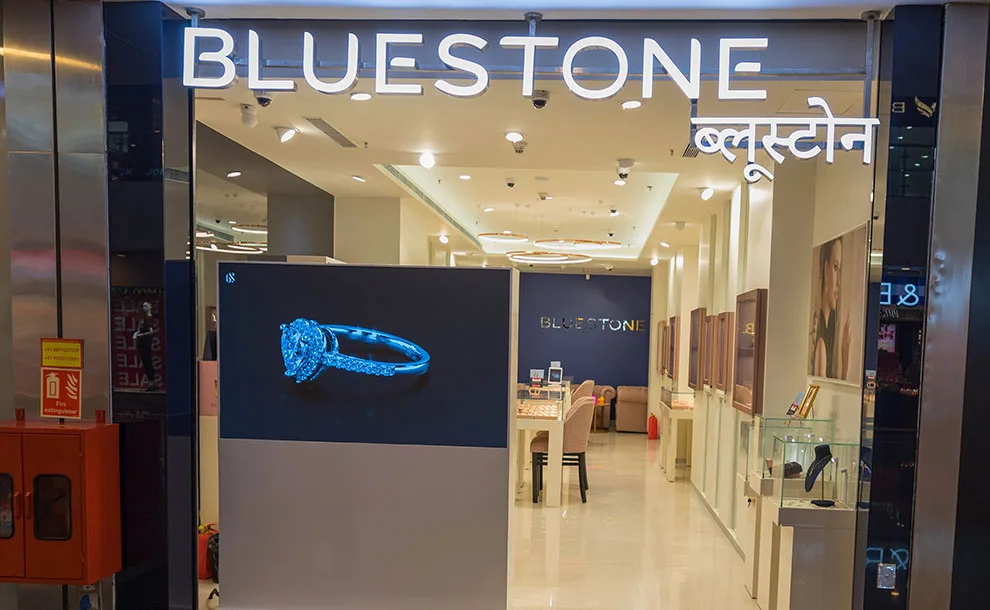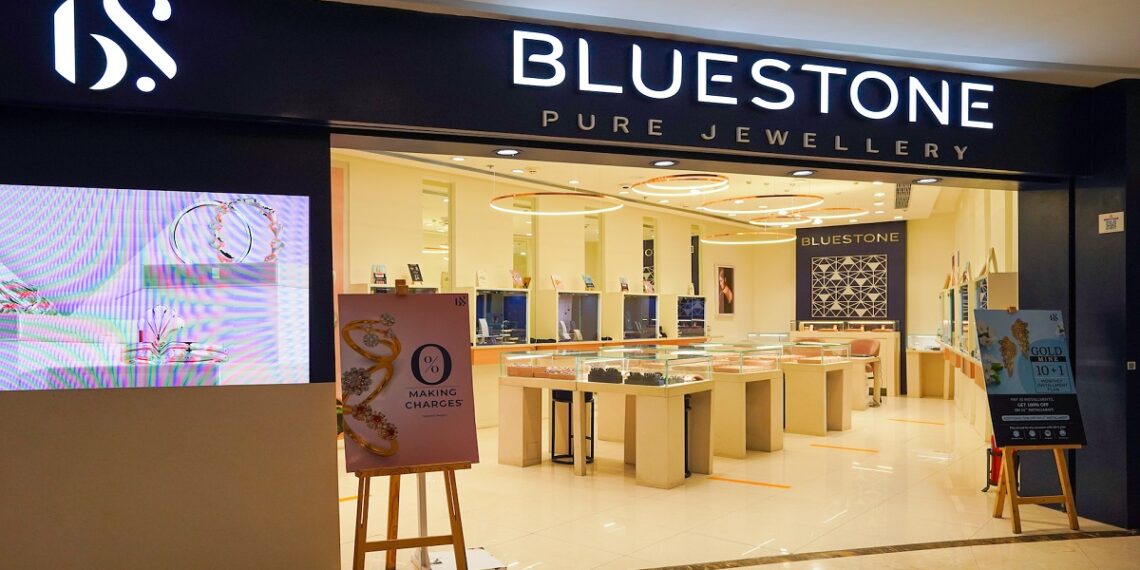The Indian jewelry retail sector is set for a major disruption as BlueStone prepares for its highly anticipated initial public offering (IPO). The company has filed documents with SEBI to raise ₹1,000 crore through a combination of fresh issue and offer-for-sale, marking a significant milestone for the D2C jewelry retailer that has revolutionized online jewelry shopping in India.
Table of Contents
BlueStone IPO: Key Details and Timeline
BlueStone has successfully secured Rs 900 crore in a pre-IPO funding round, raising its valuation to $970 million (approximately Rs 8,100 crore). However, the company is seeking a valuation of at least Rs 12,000 crore, positioning itself for a premium listing compared to established players like Titan and Kalyan Jewellers.

IPO Structure and Financial Details
| IPO Component | Amount/Details |
|---|---|
| Fresh Issue | ₹1,000 crore |
| Offer for Sale (OFS) | 2.39 crore equity shares |
| Current Valuation | $970 million (~₹8,100 crore) |
| Target Valuation | ₹12,000+ crore |
| Expected Timeline | Late 2025 to early 2026 |
| Key Investors | Accel India, Kalaari Capital, Sunil Kant Munjal |
Source: SEBI filings and company announcements
The BlueStone Success Story: From Startup to IPO
Founded as a direct-to-consumer jewelry platform, BlueStone has carved out a unique position in India’s competitive jewelry market. The company recently opened its 300th store, demonstrating significant scale and market presence in a market valued at over Rs 100 billion.
What Sets BlueStone Apart
Omnichannel Strategy: BlueStone successfully combines online presence with physical retail, offering customers the flexibility to browse online and experience products in-store.
Technology Integration: The company leverages advanced technology for personalized jewelry design, virtual try-ons, and seamless customer experience.
Quality Assurance: Each piece comes with detailed certification and quality guarantees, building trust in the online jewelry buying process.
Related: Discover how technology is transforming retail experiences and revolutionizing customer engagement in the digital age.
Market Opportunity and Growth Potential
The Indian jewelry market presents enormous opportunities, with traditionally unorganized retail giving way to branded, technology-driven players. BlueStone’s timing appears strategic, as consumers increasingly embrace online jewelry shopping and omnichannel experiences.

Competitive Landscape Analysis
BlueStone enters the public market alongside established players:
- Titan Company: Market leader with strong offline presence
- Kalyan Jewellers: Traditional retailer expanding digital footprint
- CaratLane (Titan subsidiary): Direct online competitor
- Tanishq: Premium segment leader
Investor Interest and Backing
Key investors likely to partially exit via the IPO include Accel, Kalaari, IvyCap, and Iron Pillar. This strong backing from reputable venture capital firms signals confidence in BlueStone’s business model and growth trajectory.
Why Investors Are Bullish
Market Disruption: BlueStone has successfully digitized jewelry retail, traditionally a relationship-driven business.
Scalable Model: The combination of online platform and physical stores creates multiple revenue streams and customer touchpoints.
Brand Recognition: Strong brand equity built through quality products and innovative marketing.
Challenges and Market Considerations
The IPO comes at a time when urban consumption is slowing amid sticky inflation, potentially impacting growth prospects for discretionary products. This macro-economic backdrop could influence investor sentiment and valuation expectations.
Key Risk Factors
Economic Sensitivity: Jewelry purchases are discretionary and sensitive to economic downturns Competition: Intense competition from both traditional and new-age players Supply Chain: Dependence on reliable sourcing and inventory management Consumer Behavior: Shift in consumer preferences and spending patterns
Investment Perspective and Market Outlook
BlueStone’s IPO represents a significant opportunity for investors to participate in India’s digital transformation of traditional retail sectors. The company’s strong financial performance, evidenced by successful pre-IPO funding rounds, positions it well for public market success.
Learn more: Visit SEBI’s official website for complete IPO filings and regulatory information.
What to Watch For
Pricing Strategy: How the company prices its shares relative to competitors Market Response: Investor appetite for retail and e-commerce IPOs Growth Metrics: Revenue growth, store expansion, and customer acquisition costs Post-Listing Performance: Market acceptance and trading performance
The jewelry retail sector in India is ripe for consolidation and digital transformation. BlueStone’s IPO could mark the beginning of a new era where technology-driven jewelry retailers gain market share from traditional players.
Stay updated: Check BSE and NSE websites for the latest IPO listings and market information.
Frequently Asked Questions
Q1: When is the BlueStone IPO expected to launch and what is the pricing strategy?
A1: BlueStone’s IPO timing is expected between late 2025 and early 2026. The company is seeking a premium valuation of at least Rs 12,000 crore, significantly higher than its current $970 million valuation from the pre-IPO round. The final pricing will depend on market conditions and investor demand during the book-building process.
Q2: Who are the key investors backing BlueStone and what makes this IPO attractive?
A2: Key stakeholders include Accel India, Kalaari Capital, and Sunil Kant Munjal, along with IvyCap and Iron Pillar among others. The IPO is attractive because BlueStone has successfully scaled to 300 stores while maintaining a strong digital presence, positioning it uniquely in India’s expanding jewelry retail market. The company’s omnichannel approach and technology integration offer significant growth potential in a traditionally offline-dominated sector.








